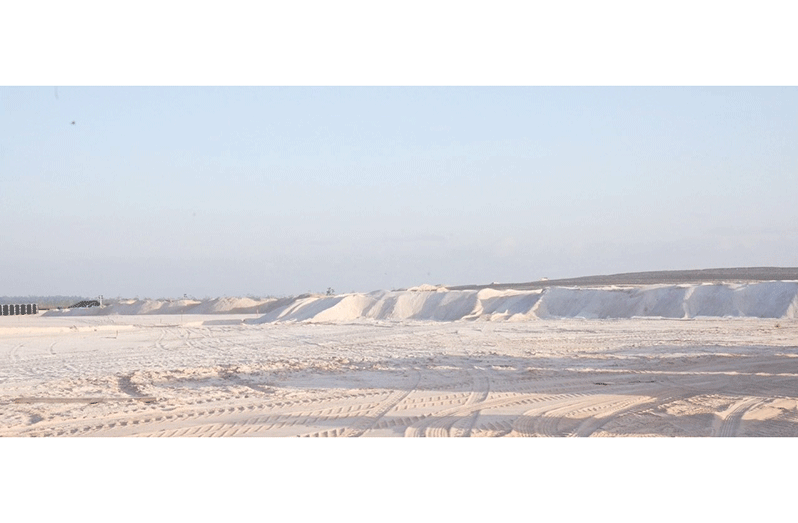President Ali tells contractors
PRESIDENT Dr. Irfaan Ali on Thursday morning paid a visit to the wharf at Wales, West Bank Demerara, to inspect the progress of the construction works going on there specifically for the purpose of supporting the gas-to-energy project.
During the impromptu visit, the Head of State met with multiple contractors, and encouraged them to utilise the current dry weather conditions to complete all essential groundwork within their specified deadlines.
“This is a very important project for us to complete; we are paying a lot of attention to this to ensure that all the contractors deliver on time,” the President said, adding:
“We have to push more during this dry season, because the weather is cooperating fully now. One of the good things is that you are already off the ground, so the weather may not affect you now.”

The Gas-to-Energy Project will see a 200km 12-inch diameter pipeline channeling natural gas from the Liza Phase One and Liza Phase Two Floating, Production, Storage, and Offloading (FPSO) vessels to a power plant and Natural Gas Liquids (NGL) facility that will be built in Wales.
In the course of providing an update on the wharf, contractor Komal Singh disclosed that the port facility has already initiated its support for the project by completing the lay-down yard. Moreover, the port facility allows for the mooring of vessels.
The port facility will serve as a means of transporting large modules, weighing up to 200 tonnes, from the port to the work-site.
A 12-inch pipeline, which will stretch some 200km from offshore, will be used to transport natural gas from the Liza Phase One and Two FPSO vessels offshore to the power plant and NGL facility, which is being constructed at Wales.
Meanwhile, a project manager attached to the Gas-to-Energy project explained that groundwork is currently being done to consolidate the land on which the gas plant will be erected.
“We are already engaging in stockpiling activities of sand for the consolidation project; we are moving sand to the site, so the project is ongoing. This area, the soil needs to be further consolidated, so that the construction can be robustly built on top of it. That will demand stacking sand all over. This will grow a couple of meters above where we stand,” the contractor explained.
Approximately 5,000 cubic meters of sand is being stacked daily, as contractors are working 12-hour shifts.
ExxonMobil’s local affiliate, Esso Exploration and Production Guyana Limited (EEPGL), the operator in the Stabroek Block, and its co-venturers are constructing the pipeline. That pipeline will be landing on the West Coast Demerara shore, and continue approximately 25 kilometres to the NGL and power plant facilities. It has an estimated cost of US$1 billion, and is cost-recoverable.
The power plant and NGL facilities will be funded by the government. Last December, the Government of Guyana and US-based integrated energy solutions group, LINDSAYCA, in partnership with a local firm – CH4 Group – signed a US$759 million contract for the construction of the facilities.
The conversion of natural gas from ExxonMobil’s offshore operations to electricity is a key component of the People’s Progressive Party/Civic (PPP/C) government’s objective to lower energy costs by at least 50 per cent through an energy mix, which incorporates gas, solar, wind, and ‘hydro’ power.



.jpg)








